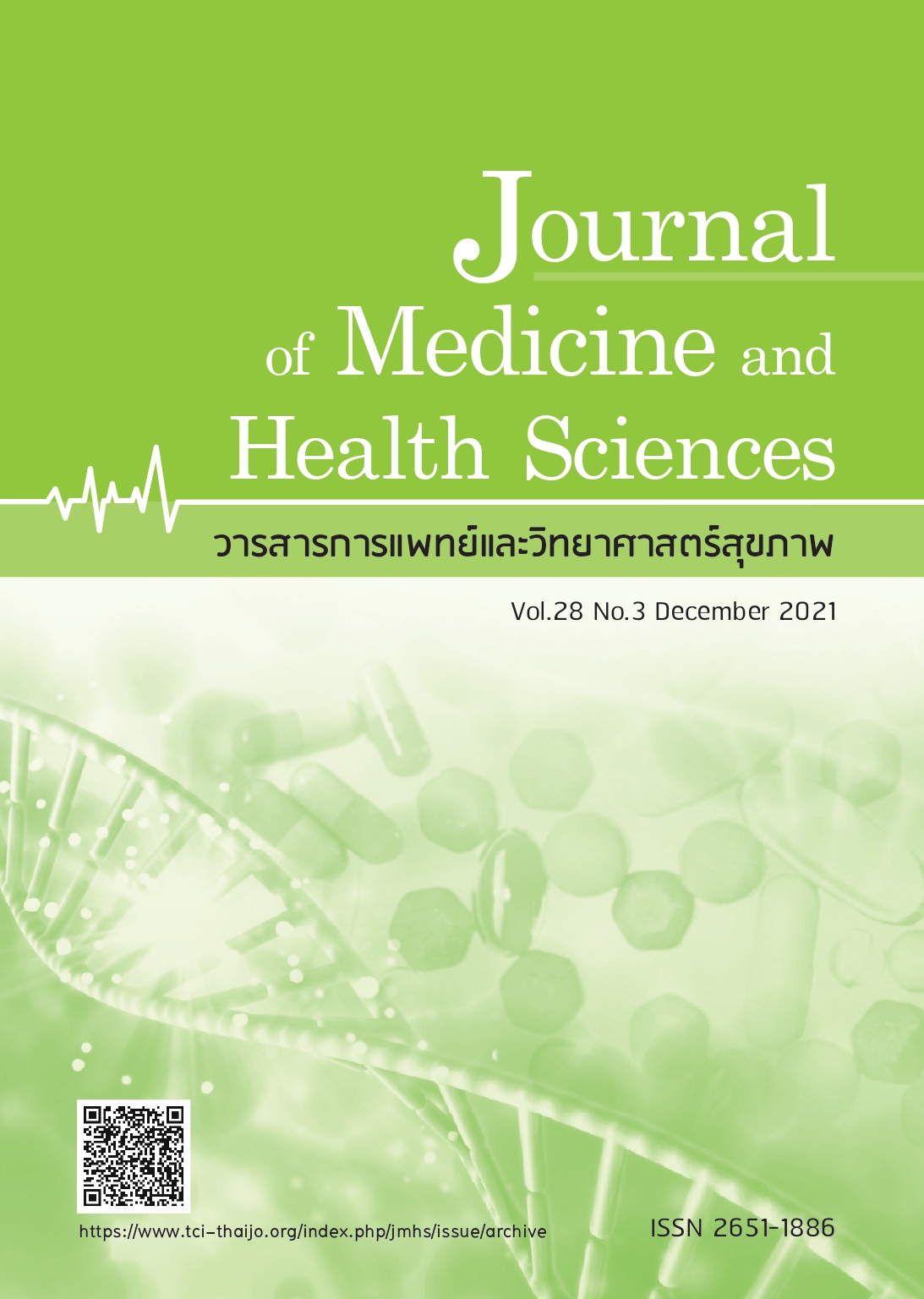Correlation with thoracoabdominal mobility with pulmonary function in healthy individuals
Keywords:
thoracoabdominal mobility, pulmonary function, predictingAbstract
Abstract
Chest wall mobility is commonly used for evaluation in clinical practice, but research of the correlations between thoracoabdominal mobility and pulmonary function are limited. The objectives of this study were to investigate the relationship between thoracoabdominal mobility and pulmonary function in healthy adults, and to create an equation for predicting the pulmonary functions of the thoracoabdominal mobility measurement. All of the healthy participants measured the axillary, thoracic and abdominal cirtometry using cloth tape. Forced vital capacity(FVC) and forced expiratory volume in one second (FEV1) were measured to determine pulmonary function. The Pearson’s correlation coefficient(r) was used to evaluate the correlation between thoracoabdominal mobility and pulmonary functions. Multiple linear regression was used to create the equation to predict pulmonary function. There were 119 participants, with 56 males and 63 females. The results revealed that axillary cirtometry was significantly positively correlated with FVC (r=0.229, p<0.05) and thoracic cirtometry was significantly positively correlated with FVC and FEV1 (r=0.307, p<0.01 and r=0.353, p<0.01, respectively). The equations to predict the value of pulmonary function were as follows: FVC (%predicted) = 87.18 + 1.86 Thoracic cirtometry (r=0.307, r2=0.094, p<0.001, SEE=10.70), FEV1 (%predicted) = 87.519 + 2.147 Thoracic cirtometry (r=0.353, r2=0.125, p<0.001, SEE=10.55).
References
2. Malaguti C, Rondelli RR, de Souza LM, et al. Reliability of chest wall mobility and its correlation with pulmonary function in patients with chronic obstructive pulmonary disease. Respir Care 2009;54: 1703-11.
3. Forti M, Zamunér AR, Andrade CP, et al. Lung function, respiratory muscle strength, and thoracoabdominal mobility in women with fibromyalgia syndrome. Respir Care
2016;61:1384-90.
4. Caldeira Vda S, Starling CC, Britto RR, et al. Reliability and accuracy of cirtometry in healthy adults. J Bras Pneumol 2007;33:519-26.
5. Bockenhauer SE, Chen H, Julliard KN, et al. Measuring thoracic excursion: Reliability of the cloth tape measure technique. J Am Osteopath Assoc 2007;107:191-6.
6. Reddy RS, Alahmari KA, Silvian PS, et al. Reliability of chest wall mobility and its correlation with lung functions in healthy nonsmokers, healthy smokers, and patients with COPD. Can Respir J 2019;2019:1-11.
7. Lanza Fde C, de Camargo AA, Archija LR, et al. Chest wall mobility is related to respiratory muscle strength and lung volumes in healthy subjects. Respir Care 2013;58:2107-12.
8. Miller MR, Hankinson J, Brusasco V, et al. Standardisation of spirometry. Eur Respir J 2005;26:319-38.
9. Debouche S, Pitance L, Robert A, et al. Reliability and reproducibility of chest wall expansion measurement in young healthy adults. J Manipulative Physiol Ther 2016;39:443-49.
10. Thoracic Society of Thailand under Royal Patronage. Spirometry guideline. Bangkok: Parbpim; 2002.



